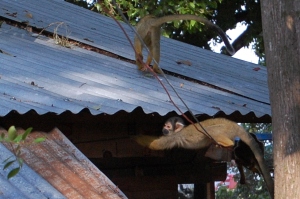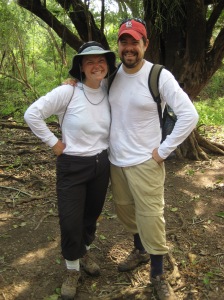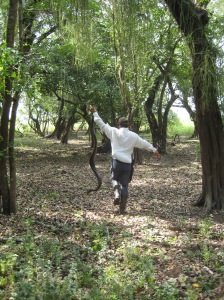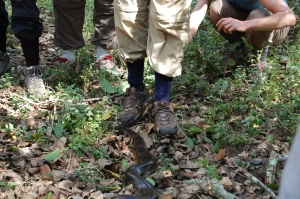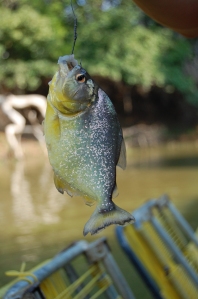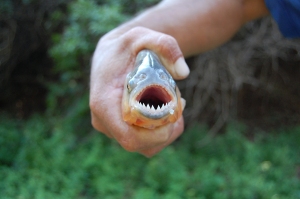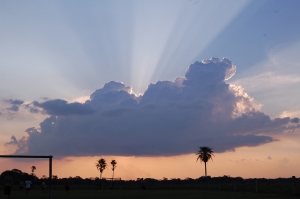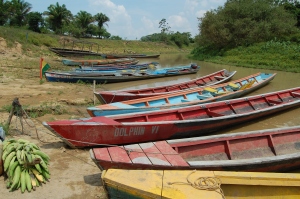
I don’t know how many times I said the following phrase while on our tour, “I really feel like we’re on another planet.” Now I’ve seen mountains many times over the years, in Colorado, Arizona, New Mexico, Utah, upstate New York, Vermont, Switzerland, and now Peru and Bolivia, but I have never seen the differing landscapes and colors that I saw over our tour of southwest Bolivia. Every corner we turned provided new landscapes, differing colored mountains, volcanoes, geysers, and even a rock that looked like a tree.
On the first day, we found ourselves describing our surroundings like the American Southwest. The rock formations were very similar to a part of Arches National Park in Moab, Utah called the Fiery Furnace (only they weren’t red).


As we went along on the tour though, the landscape changed. There were mountains, and they reminded us a bit of the Painted Desert in Arizona, only much more dramatic. All four of us found the scenery breathtaking. It was funny to hear everyone try to describe what we were seeing. The plethora of different shades of colors on each separate sandy mountain was a sight to see. Steve described it as one of those different colored sand things framed in glass. Megan described it as someone kicking several different colored cans of paint down the mountain. I described it as God taking a package of colored chalk, throwing it on the mountain, and stomping on it with his foot. All were apt descriptions. And the thing was that every mountain was different. Some had different shades of reds, oranges, and yellows, some had different shades of grays, whites, and blacks, some greens and blues. And it was all surrounded by desert, which provided a great contrast to the mountains.

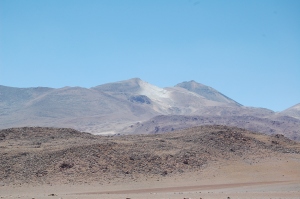


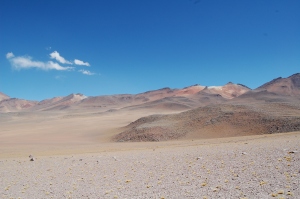


While the previous pictures provided us our scenery for much of the middle two days of the tour, like I have repeatedly said, it was constantly changing. Towards the end of the second day, after we saw Laguna Verde and drove through much of the area from the above pics, we came across the Sol de Manana Geysers, which was a first for either of us. This area was 5000 meters above sea level, and we saw the power of the Earth (or at least I think it was Earth) up close. This area was intensely volcanic and the temperatures within the bubbling, steaming mud pools can reach up to 90 degrees Celsius (over 200 degrees F).


Another interesting part of our journey was the Arbol de Piedra in the Desierto de Siloli. We arrived here on our third day. The Arbol de Piedra is a tree shaped rock formation, which has been formed over the years by sand and wind driven against its sides to give it its distinctive shape. While the Arbol de Piedra was impressive itself, again, we were greeted with great views from every direction. The formation we came to see was surrounded by all different types of other rock formations, which was set in the middle of a desert, and then surrounded by differed colored mountains like the ones above.

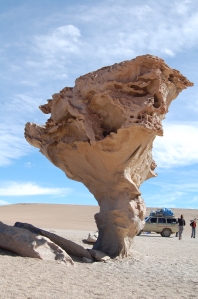


While I was continually impressed with everything we saw over the four days, the reason we came on this tour (and the one main reason we came to Bolivia, even though we soon found out there’s so much more to this wonderful country) was the Salar de Uyuni itself. But that deserves its own post, and it will have to wait for next time.
Until then…





















